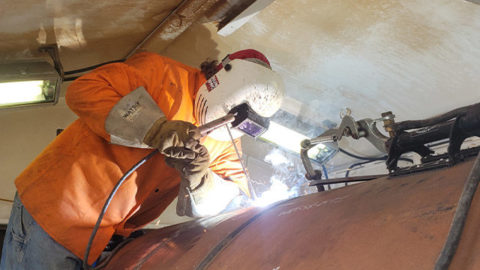Canada’s emerging LNG sector can play an important role in the country’s economic recovery from COVID-19, providing a wealth of jobs for modern, highly trained workers and the industry’s supporting businesses, says a new report by PetroLMI.
The workforce development resource says the long-term prospects for LNG in Canada remain attractive although the coronavirus lockdown has impacted the near-term outlook.
“While the events of recent months have delayed or deferred decisions on some proposed LNG projects along Canadian coastlines, these projects present opportunities for the future,” says PetroLMI vice-president Carol Howes.
“The construction and operation of LNG in Canada will create employment and grow business across a spectrum of sectors that supply the goods and services and natural gas needed.”
In addition to thousands of jobs associated with construction of LNG projects, PetroLMI’s report describes the less well understood ongoing jobs and skills required to support and LNG facility through its decades-long lifespan. And that’s a different set of skills than may have been required for past oil and gas projects.
By the numbers
Workforce requirements for an LNG project can be thought of in four buckets: construction of the plant and pipeline; operations of the plant and pipeline; supply of natural gas; and supporting goods and services for both construction and operations. This includes repair and maintenance, waste management, truck transportation, security and professional, scientific and technical services.
There is currently one project, LNG Canada, under construction, and four additional projects proposed in B.C., Quebec and Nova Scotia. Construction is well underway on the Coastal GasLink pipeline project that will provide natural gas to LNG Canada, employing an estimated 2,500 people in northern British Columbia during this summer’s construction season.
Construction can require thousands of workers — including pipeline construction, LNG Canada is expected to require up to 10,000 at peak. Operations jobs are fewer but longer term; LNG Canada expects the pipeline and export facility to create up to 385 direct roles. That’s about average for a Canadian LNG project, PetroLMI says.
More significant is the ongoing workforce requirements to supply the natural gas. LNG Canada will create 3,600 to 4,200 direct and indirect jobs in the natural gas production sector, according to analysis by the Petroleum Services Association of Canada (PSAC).
If all five projects that are progressing in Canada were to proceed, PSAC estimates it would create an additional 8,300 jobs to support natural gas production.
Modern energy workers
Howes says that Canada’s oil and gas industry is in the early stages of a cultural and operational shift that is reshaping not only how it hires but the arc of careers, which is especially evident for LNG.
Expectations for workers are changing as companies adopt new technologies, digitize their operations and work towards lowering carbon dioxide emissions while managing evolving market conditions.
“This is particularly true of those choosing to work at LNG facilities, which will leverage state-of-the-art technologies and the most cost-effective and efficient equipment,” the PetroLMI report says.
The modern energy worker should be innovative and comfortable with technology, highly skilled at reading, numeracy and problem solving, and strive for continuous improvement, the report says. They should also have business acumen, be able to plan and execute projects of all sizes, and be aware of the cost and regulatory implications of their actions and the projects they work on.
Howes says the key to success in any industry, including Canadian oil and gas, is “to recognize and capitalize on the opportunities that come with change.”
